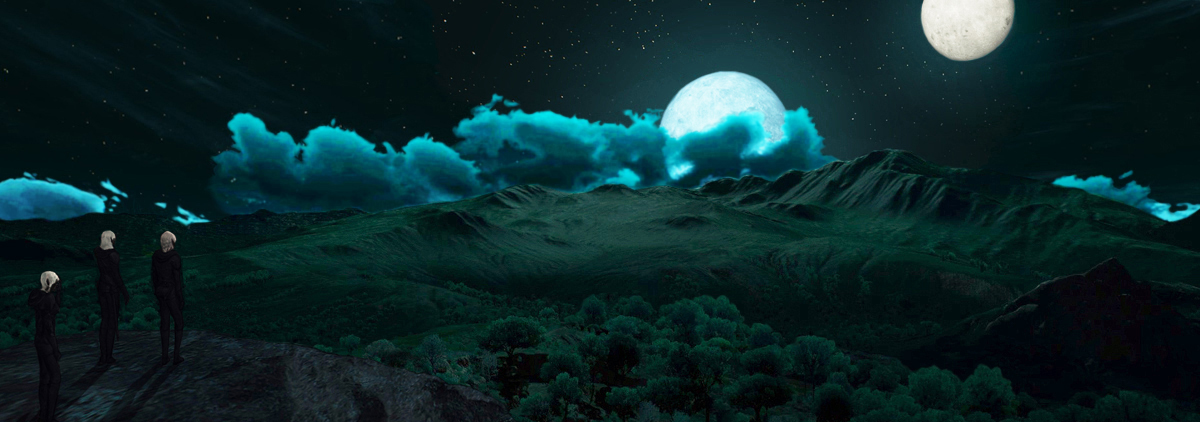Vuthra'tern
Vuthra’tern is the second Davrin settlement of The Deepearth, formed by a group who split off from the rule of the Valsharess and escaped from the Great Cavern centuries ago. Since then, all residents of the smaller settlement have been told about the tyrant Queen, the massive threat from which their Priestess-Matrons protect them.
The same cannot be said in reverse. Most of the history of this rebellion in Sivaraus has been scrubbed from public memory. Most of the population under the Valsharess do not know a second city exists.
Geology and Resources
Vuthra’tern rests in a deep, narrow valley which is nonetheless the largest open cavern available in its area. The location is roughly two spans’ worth of travel away and down from Sivaraus, assuming one does not get lost or run afoul the Ornilleth. Fortunately, the Davrin here do not have to compete with Tragar in this area.
With only one-fifth the population of Sivaraus, fewer slaves, and no central fighting force, Vuthra’tern is nonetheless well-defended. Borrowing their strategy from the Tragar, the Davrin made locating and entering the single passageway into the valley extremely difficult. While there are numerous caves and partial tunnels around the valley’s perimeter, there is no back entrance or exit. All openings have been systematically collapsed and sealed over time.
Inside, the valley is just large and fertile enough to approach self-sufficiency as long as their population doesn’t grow too quickly. The Davrin also trade when necessary with the Yutogul and Ketro of the area to close any gaps.
Most trading is done at the large waterfall not far outside the main passageway to Vuthra’tern. As a neutral location central for most to obtain fresh water, the sheer walls and cliffs make the paths and bartering area equally dangerous for all who might go back on their word.
Civil Landmarks
Eight Davrin Houses rule over every available spot of land and water within the valley. Unlike Sivaraus, there is no central government, no collective archive of records, no combined defense force, and no central market. This also means there is no equivalent to the Red Sisters, and no Driders or Drider Keeper. Similarly, the extensive “fringe” market in Sivaraus does not exist in Vuthra'tern, nor is there any undeveloped “buffer” boundary between plantations.
Each Matron of Her House is also the Priestess of Braqth for those lands. As such, she and her family maintain their own Altar to Braqth, their own House Guard, and their own Market, and negotiate their existence with each of the others.
The Matrons and those tending and guarding her land live close enough to each other to know what is going on with their neighbors. Earning favor and resources through spying and scrying is rampant but also disorganized.
Politics & Economy
One of the few remnants of the Valsharess’s rule is the need to “rank” every House and Matron. In the early centuries, “might made right” to determine the “First” House and each House down to the Eighth.
To give these ranks more power and purpose, not to mention a needed outlet for ambition, the Matron-Priestesses attempt to gather once per turn in a “Council of Eight.”
The First Matron has her choice of the best trading times and contacts within the valley and at the waterfall. She will also decide how many or how little of her House Guard she might pledge toward collective sentry duties at the main passage or to send on extended reconnaissance outside their borders. Each ranking Matron after would add her pledge with the final House required to fill the quota.
Accurate knowledge of each House’s true resources is information both invaluable and difficult to obtain. The Matron-Priestesses constantly play a game of cards where everyone is cheating.
History & Culture
Changes occur far more swiftly in Vuthra’tern than in Sivaraus.
The leadership overall is much younger, with less experience and impulse control, especially since their oldest founders and last survivors of the rebellion died off. The average age of a Matron-Priestess in Vuthra’tern is less than half that of a House Matron or a Sanctuary Priestess in Sivaraus.
Sacrifices to Braqth are more frequent on account that every House Altar must be anointed with blood regularly to appease Braqth and help keep order through fear, oppression, and casual abuse. Matrons and their Sathoet are more easily assassinated and replaced by plots originating from other Matrons and from within their own House.
Houses attack and raid each other more frequently in attempts to alter the ranking of the Council of Eight. A Matron’s family can even be culled, her governance collapsed, and her people and wealth assimilated.
If the failed House had a longer history than the victorious upstart, then such takeovers often result in a new name similar to the defeated one, in an attempt to claim the longevity of the status as well.



